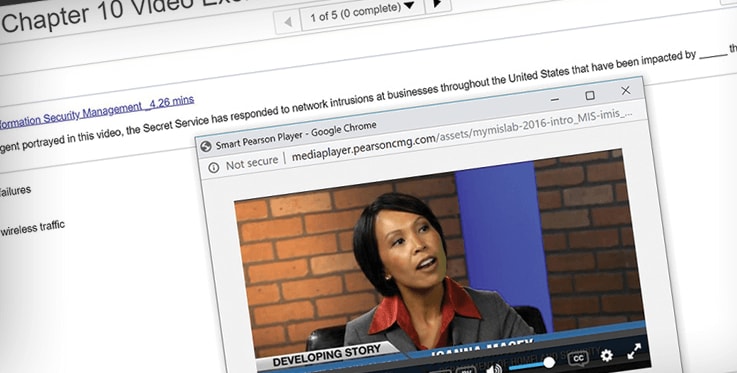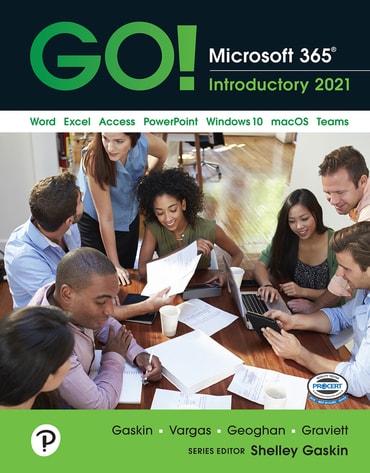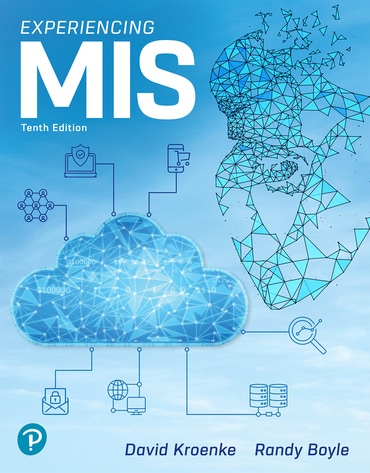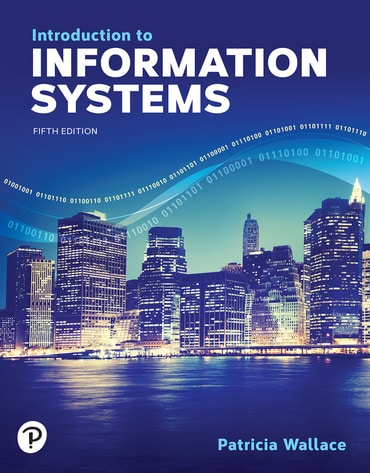Join Dr. Shelley Gaskin as she discusses encouraging critical thinking skills in the classroom as well as how one can go about developing assessments for coursework with the GRASPS model.
Information Technology & MIS
Find materials and tools to meet your IT & MIS course goals

Discover how MyLab IT just got better
IT instructors have seen an average course setup time savings of more than 50% with MyLab IT NextGen. Find out how.

Simulations mimic real-world experience
Ensure your course stays current as Microsoft® 365 and Office 2021 change. Our digital textbooks, Simulations, and Graders update effortlessly.

Virtual practice builds skills and confidence
With MyLab IT students take on the role of managers in virtual simulations that test their problem-solving skills.
Information Technology (IT) titles




Management Information Systems (MIS) titles




Join Julie Rebert as she gives guidance on incorporating a variety of assignment types to your course goals, while addressing skills like critical thinking, effective communication, and inclusion.
Join Alan Shapiro for a discussion on the importance of having MS Office skills and employability.
-
How To Make Group Projects More Valuable (and Less Terrible!)
Admit it, group projects can be a drag--not only for your students, but also for you as the instructor. So why do we do them? To quote one of my class alums, “Life is one big group project.” Working with others in an academic, professional, and personal settings is unavoidable. We as instructors know there is inherent value for students in doing group work, but too often a poorly designed project allows for the negatives to overshadow the benefits.
Let’s first acknowledge the most common complaints we hear from students about group projects.
“Why are we doing this?”
“I do all the work.”
“I don’t have time for this.”
“My partners ghosted me.”
“Why does he also get an A when I contributed more?”
“I just want to do my own thing in my own way.”
“This topic is not what I want to do nor the group I want work with.”
Frankly, given the design of many group projects, these are often valid complaints. No student wants to feel burdened by a seemingly pointless and time-consuming project that has unfair grading. How can we design group projects that will be a positive experience for students (and for us), show them the benefits of collaboration, and give them to tools needed to deal with challenges that may arise? I’ve included a data analysis group project in my Quantitative Literacy course for 20 years. Having redesigned, revised, modified tweaked, adjusted, and adapted it many times over those years, let me share with you what I’ve learned.
How To Make Group Projects More Valuable (and Less Terrible!):
- Transparency. Take the time to explain the intention, purpose, and objectives of the project, specifically the benefits of collaboration as well as the potential challenges and how you will deal with them. Have a clear grading rubric for each part of the project.
- Incorporate low stakes group work throughout semester. Smaller, “one off” group experiences, even just “compare your answer with your neighbor” or “think, pair, share,” prepare students for the larger project to come. Once the larger project begins, they will have built rapport with their fellow students and seen some of the benefits of collaboration.
- Give students some choice in topic and/or group members. In my course, I give students a few topics to choose from. The students who choose the same topic constitute the group. By choosing the same topic, group members start with something in common.
- Start with individual work. Start the project early in the term with a few building block assignments that students complete on their own first. Give a grade, feedback, and the opportunity to revise that work before the group portion begins. This guarantees each student has something to contribute to the final product.
- Provide time for group work during class. Scheduling time to meet with other students outside of class can be a big challenge, especially for students with heavy class loads, jobs, and/or family responsibilities. Schedule some time during class for the group, even it is just time to assign tasks to be done by individuals between class meetings or time to check in on progress. This can keep members on task and on schedule. Also, it gives you the opportunity to monitor participation and progress among the group members. When all work is done outside of class, you have no idea who has done what and how much each member contributed.
- Use technology. Utilize Google docs, messenger apps, or Groups on your learning management system. These are great ways for students to communicate, share work, give and receive feedback, and edit work between in person meetings.
- Follow up with individual reflection. After submission, ask students to reflect on the experience—what went well, what was challenging, how well did they work with others, what did they contribute to the final product, what did they learn, what will they take to their next group project experience, any suggested changes to the project.
- Not same grade for all group members. For example, 25% of final project grade is based on the individual assignments, 10% based on participation in group portion, 10% on individual reflection, and 55% of grade based on final product produced by the group.
A well-designed project can mitigate the common complaints about group work and enhance the benefits. By giving students a choice and a voice, opportunities to help and be helped, flexibility and agency, and support and freedom, you just might find out how to make group projects more valuable.
Share your thoughts and ideas on group projects in the comments.

Author Spotlight: Dr. Shelley Gaskin
Teaching students to think critically and solve problems is a widely pursued goal in higher education. To learn to think critically and solve problems, students must take an active role in constructing and defending their knowledge. Dr. Shelley Gaskin, Pearson IT author, writes about the best ways for students to demonstrate critical thinking with outcomes-based assessments.









